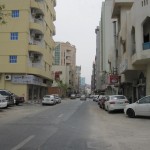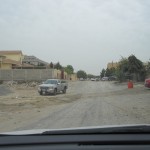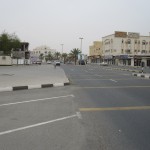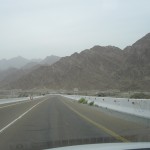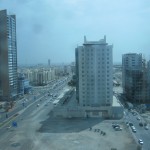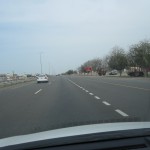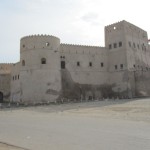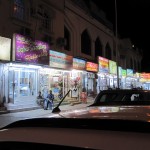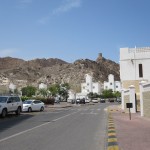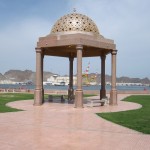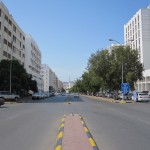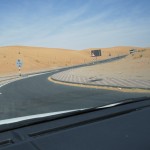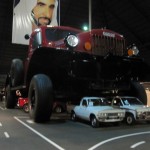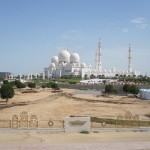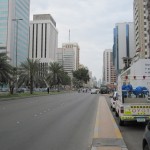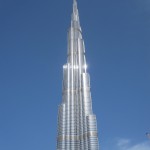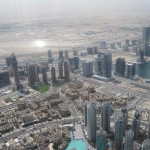United Arab Emirates and Oman 2015
CLICK ON PICTURES TO ENLARGE
United Arab Emirates and Oman 2015
The Emirates
The United Arab Emirates (UAE) actually consists of seven states or Emirates that were formerly, along with other parts of the Middle East, under British rule. After the British pulled out in 1971 they combined to form one country but still retained the internal divisions under control of the old ruling families, each headed by a Sheikh. They are strict Muslim societies with no democracy as it is understood in the West.
of the Middle East, under British rule. After the British pulled out in 1971 they combined to form one country but still retained the internal divisions under control of the old ruling families, each headed by a Sheikh. They are strict Muslim societies with no democracy as it is understood in the West.
The two largest Emirates, well-known to most British people, are Abu Dhabi and Dubai, the others being Ajman, Fujairah, Ras al Khaimah, Sharjah, and Umm al Qalwain. Abu Dhabi is actually the capital of the UAE and by far the wealthiest Emirate, because it has most of the oil. It is largely thanks to the generosity of the ruling Sheikh of Abu Dhabi in sharing his wealth at the time when the UAE was formed that the whole country has remained stable and prospered.
My plan was to fly with Emirates Air Line from Gatwick to Dubai International Airport, hire a car, drive across to the east coast, down to Muscat in Oman and back through the desert. This would mean driving about a thousand miles in eight days, so I would be fairly busy.
For a change I was looking forward to the flight because it was on an A380, the world’s largest passenger aircraft, with over 500 seats as operated by Emirates. It was an overnight flight, arriving in Dubai at about 7.00am, by which time I had had no significant amount of sleep for about 19 hours. Dubai Airport is one of the largest and busiest in the world, and getting from the plane to the terminal exit involves a long walk, a long train ride, and a long wait for the baggage to come through. Eventually I got to the car rental office and picked up my Toyota Yaris, possibly not the most prestigious car in which to tour one of the wealthiest countries on the planet.
The earliest time I could check-in at the Ramada Beach Hotel Ajman, about 18 miles from the airport, was 2.00pm so I decided to take a small diversion to visit the Sharjah Classic Car Museum and spend the rest of the time on the beach until my room was available. Within a short time of leaving the airport I realized that this was a country of BIG roads, BIG roadworks, fast and furious driving, and a high rate of development in all respects. At home I had downloaded excellent offline maps of the UAE and Oman into my phone and tablet computer, both of which have GPS, so at least I could always find out where I was, but I would always be fighting against the very complex local traffic systems.
On the way to the museum I had a foretaste of what was to come when I was diverted by massive roadworks and finished up on what was clearly quite an old and run down industrial estate doing mostly metal fabrication. Most of the people around (mainly men) appeared to be from the Indian sub-continent, and that applies to all aspects of the labour market in the UAE, especially where tourism is concerned. Less than 20% of the population of the UAE are actual Emirati (Emirates citizens), and over 90% of the employees of private companies are ex-pats.
Ajman
After the museum I drove through Sharjah to the coast and turned northwards into Ajman, until I came to the hotel. It had quite good reviews, but some people commented on the lengthy check-in procedure, which did seem complicated. My room was not ready, so I was given a ticket for the private beach across the road with “Waiting for Room” written on it. At the entrance to the beach the man would not let me in because there was no room number on the ticket. He rang the hotel reception, who told him they now had a room number for me, but he would still not let me in until I went back to the reception and got the number written on the ticket. After completing the check-in procedure, which took some time, I went back to the beach and found the man locked in combat with about six young ladies who were attempting to get through the gate. This was the first of many “jobsworths” I was to encounter in the course of my trip, and eventually I gave up and walked along to the public beach next door. This stretch of coast faces west onto the Arabian Gulf.
By early evening the lack of sleep was taking over and I retired for about 14 hours to catch up, being disturbed only by the periodic call to prayer from the loudspeakers on the mosque next to the hotel. They were indeed very loud, but for a visiting foreigner from a non-Islamic country it is an essential experience.
Although I had the maps in the electronic gadgets I wanted a paper map of the UAE to get an overview of the route I was taking around the country. I had tried unsuccessfully to get one in England, so before setting off for the east coast the next morning I had a look round the shopping streets near the hotel. The area is fairly European in character, but has the preponderance of barbers and tailors found everywhere in that part of the world. Eventually I found a big LuLu hypermarket with the map I wanted tucked away in the middle of it. Ajman, incidentally, has no public transport at all apart from taxis, in common with many other parts of the UAE.
To the East coast
From the hotel I had to drive eastwards through a large conurbation and had gone some way before I realized that I needed to get petrol before venturing into more remote areas. I could not remember seeing a filling station anywhere, so I managed to find somewhere to pull off the rat-race multi-lane urban highway to consult the map in my tablet. It showed only one petrol station within several miles, and that was awkward to get to, but there was really no choice. I started to take a short cut and found that many of the side streets had a rough dirt surface, and just at that moment a strong wind came out of nowhere and caused a small sandstorm.
When I finally came to the filling station it had two pump islands with attended service and long queues, so it seemed that this really was the only source of petrol in the area. The service was painfully slow and for some people complicated, with the process of filling the van in front of me involving several pieces of paper and signatures. For a country with the world’s third largest reserves of oil it was proving surprisingly difficult to get some into my tank, but at least it was cheap at approximately £0.32 per litre, less than one third of the price in Britain.
After a fast and boring drive on the Sheikh Zayed Bin Sultan Al Nahyan Road I reached the oasis town of Al Dhaid, where I risked a burger and chips in a café run by three shady looking characters and felt sure I would regret it later. Al Dhaid is clearly a centre for desert-based leisure activities with a number of shops renting or selling off-road motor cycles and quads.
From Al Dhaid eastwards the scenery was more interesting, with camels in roadside pens and little goats wandering about in the desert scrub. Shortly before the town of Masafi was the Friday Market (actually open every day), a long string of shops selling carpets, household goods, fruit and vegetables and the usual souvenirs for tourists. The economics of this are a mystery to me. As in other countries, like Morocco, the people selling the carpets expect tourists to buy them, but I cannot imagine how you would get a twenty foot square carpet from Masafi to a house on the south coast of England. It is also hard to understand what happens to the fruit and vegetables. There were several large stalls piled up with them and from the relatively light traffic I could not see how there were anything like enough customers to buy more than a small proportion of the stock. The carpets and souvenirs could be dusted down for sale the next day, but surely most of the food would finish up being thrown away.
Soon after Masafi the road ran between slag heaps and I wondered what sort of mining operation had given rise to them.
As I drove on they got larger and larger, and it turned out that this was the start of the Hajar mountains, which in that area look like huge piles of earth, the most unattractive mountains I have ever seen. The road went straight on to the coastal town of Fujairah, but I turned north towards Dibba and drove alongside the mountains for about 25 miles. At Dibba the road runs through to a stretch of coast on the Gulf of Oman, with good sandy beaches and smart hotels. According to the guide books this is a good area for a beach holiday away from the crowds.
A large part of the peninsular north of Dibba actually belongs to Oman, and there is also a little bit of Oman like a land-locked island in the mountains between Dibba and Fujairah.
My plan was to stay the night in Fujairah, about forty miles south of Dibba. The road runs past coastal resorts with occasional sea views for most of the way until it comes to the hectic Fujairah port, which is the world’s third largest oil refuelling port after Rotterdam and Singapore. Fujairah is definitely a town here to come, with a massive area of development at the western end of the main street, including an international airport and several tower block hotels. It is like a little bit of the USA on the east coast of the UAE and after booking in at the recently-built IBIS I went for a walk to soak up the lack of Arabian culture. A few weeks before my visit, incidentally, two British men were arrested for plane spotting at Fujairah airport and were still being held on suspicion of spying.
Oman border to Muscat
My aim the next day was to drive down the coast road to Muscat, the capital city of Oman, a distance of about 180 miles from Fujairah. The UAE/Oman border post is about 12 miles south of Fujairah, and I was deluded enough to think that as the two countries are friendly the border crossing would be quick and easy. When I collected the car in Dubai I had to pay £60 extra insurance for use in Oman, and I was told that if “anything happened”, a phrase that I have heard before on my travels, it was my responsibility to get the car back into the UAE. I asked how I could do that, and they said there was an emergency number. I could not imagine whom it would be connected to, but if you worry about such things you would not do anything.
At the frontier post I pulled alongside the kiosk and a man standing nearby indicated that I should move the car to one side and take my passport into the officer in the kiosk. The officer took my passport and stared intently at the front cover for some time, before flicking through it and examining the contents in great detail. He was obviously looking for my UAE entry stamp, which I pointed out to him, but he was not satisfied with that. While this was going on he kept interrupting the process by dealing lorry drivers as soon as they arrived, and I thought I was going to be there all day. He did not speak any English, but eventually another officer arrived who said something I did not understand, and a lorry driver behind me said “He wants 50 dirhams” (about £10). Apparently it was tax and as soon as I paid it I was sent on my way, thinking I was in Oman.
But no. About 300 yards along the road was another kiosk containing an officer who looked at my passport and sent me over to a building at the side, in which two men in uniform were sitting behind windows. The first one looked at my passport and sent me to the second one. He looked at the insurance documents for the car and asked for the registration document. I could not see anything like a registration document in the envelope with the car papers, so I said “I don’t think I’ve got it”. He replied “You’ve got to have it”. I went out to the car and to my amazement found it in the form of a laminated card in the glove box. When I gave it to the man in the office he said “Card, please”. I said “That’s it”, and a lorry driver behind me said “No, he wants a bank card”. When I gave him my Barclaycard he charged 5 reals to it (about £10) and I asked what it was for. He replied “Tax”. So I had paid £10 exit tax to the UAE and £10 entry tax to Oman.
It wasn’t all over yet. The next kiosk contained a lady who asked for the small piece of paper. I said I hadn’t got a small piece of paper, but she said I must have, and after a frantic search among the papers on the passenger’s seat I found it. She stamped it, and 100 yards further along the road a man in uniform stopped me and took it from me. At last I really was in Oman, and drove away wondering what would happen to the Austrian couple who couldn’t find their insurance documents in the No Man’s Land between the two countries.
From here the road was a wide, well surfaced dual carriageway with a two-way service road on either side the whole way to Muscat. The eastern side, nearest to the ocean, was lined with businesses of one sort or another, ranging from rows of workshops to small farms, with some residential areas We are talking here of a distance of over 150 miles. Every few miles there was a junction with a roundabout and road humps, forcing the traffic down to walking pace momentarily, before resuming its manic speed. Around the coastal town of Liwa, with its international container terminal, the lorry traffic was heavy, and I thought the general standard of driving was worse than in the UAE. Speed cameras were fairly frequent, but ignored, and I think there is a belief that most of them are not working.
Muscat area
My guidebook suggested that a town called As Seeb, a few miles before Muscat, was a great place to experience everyday Omani life, and I decided to spend the night there. On the way I went through a town called Barka, which had a wonderful fort like a children’s sandcastle. The guidebook and the map in my tablet both listed a hotel called Dream Resort near the beach as a reasonably-priced place to stay. It had a strange sort of slightly upmarket holiday camp atmosphere, with massive opaque glass doors between the bedroom and the en-suite facilities, and other supposedly stylish features. A letter of welcome on the table was signed Raj Shetty – Chairman and Managing Worker.
The town centre was within walking distance, and by the time I got there it was dusk, but it was still a hive of activity, with all the shops still open and very brightly lit. The tailors, mostly from Pakistan or Bangladesh I think, were beavering away at their sewing machines and the barbers all seemed to be fully occupied. There were lots of shops selling electrical, electronic and household goods as well as a wide choice of restaurants, and the whole place was booming. The guide book was right.
After a long walk round and a really good meal in a restaurant with a menu that showed pictures of the food it was about 9pm and the tailors were still tailoring and the barbers still barbering with no sign of slackening off.
The next day I was intending to look around the Muscat area and then drive about 75 miles inland to a desert town called Nizwa. From As Seeb I followed the coastline as closely as possible to a resort called Mutrah which faced on to a bay and harbour for container ships. The place was a madhouse, with people fighting for parking spaces in the centre, but I found somewhere to stop to take a few photographs. From here it was just a short distance to Old Muscat, which I expected would be full of tourists and impossible to park in. In fact, there were few people there and it was easy to park with no charge, but I found it rather disappointing. Apart from the Royal Palace, which is quite impressive, and two forts high up on the sides of the harbour, there is not a lot to see. Like almost everywhere else, the place was full of barriers to do with roadworks.
The road from Old Muscat led round to Ruwi, which is the commercial hub and business district of the capital city. The main street is a wide thoroughfare lined with banks and other modern office buildings comparable with anything to be found in Europe, leading to a square with a clock tower. Nearby is a small bus station, but I did not see any buses, and public transport appeared to be minimal, as is usual in that part of the world.
Considering that it was mid-afternoon on a Tuesday the main highway through the Muscat area was amazingly busy, and looking at the map it is hard to see where all the traffic was coming from. To get on to the road to Nizwa I had to go most of the way back to
AsSeeb and then turn off inland skirting the mountains. This was still more or less a motorway, with long winding bends and hills, the inside lane being full of lorries travelling at about 40 mph and the outside lane packed with cars nose to tail at 75 to 80 mph.
This was absolutely not what I had expected Oman to be like. I thought it would be a calm, quiet place, with a slow pace of life. Apparently it was like that until about 1970, when the present Sultan came to power, and he has transformed it into an advanced industrial nation with signs of the emergence of a democracy.
Nizwa
The rat race gradually subsided as the traffic disappeared into settlements along the way, and by the time I reached the outskirts of Nizwa it became fairly civilized. As I entered the town I turned off looking for a hotel called the Majan that I had noted down. At that moment there was a clap of thunder and the heavens opened, producing within seconds the sort of flash flood that is common in the area. To make matters worse I had taken a wrong turning and entered a village called Farq (or Firq), which is a maze of incredibly narrow winding lanes, at that time all completely covered with water so that it was not possible to see the edges of the road. However, I could see that it was a wonderfully picturesque place, full of palm trees and ancient buildings, including many abandoned sandstone houses that had been left to erode away. After blundering about for a while I got back to the main road and discovered the Majan Hotel in the middle of a long stretch of roadworks, but it could only be reached by following an awkward diversion.
It was actually on a sort of layby that had been part of the main road, and was now the other side of a large and possibly deep pool of water. I left the car and walked along to the hotel, climbing over various obstructions to avoid the water. As I approached the door the manager came out and appeared to be keen to do business, which I suspect was not terribly good under the circumstances. We had a quick negotiation about the price and I asked him how to get to the car park. He said “I will show you” and walked back to the water with me and said “Through there and behind the little house”. The “little house” was a concrete building like a domestic garage standing in a different pool of water. I was rather doubtful about it, but at that moment a car similar to mine drove through and the water came just up to the bottom of the doors, so I decided to risk it.
Once sorted I went for a walk through Farq, which was immediately behind the hotel. By now it was dusk, and I had to take care to memorize the route even though I had a map in my phone, because it really was like a maze of tiny lanes and junctions. The buildings were a mixture of ancient and modern, with a fort and several mosques. The sandstone buildings were fascinating, because once they reach a certain state of deterioration due to erosion it is impossible to repair them and they are simply abandoned. There was also a tiny general store, a tailor making women’s clothing, and what appeared to be a communal washroom.
After about half a mile I turned back, and it started to pour with rain. The air was warm but the rain was not, and I was resigned to getting soaked when a very stylish Toyota 4 x 4 pulled up alongside me, and the driver, a young Arab man in white robes, asked in very good English if he could take me somewhere. I said I was on the way to the Majan Hotel, and he said he would take me there. As I thanked him and got into the car he said “It is my duty”. When we got to the water I said I would walk from there, but he insisted on taking me right to the door of the hotel.
The desert and Al Ain
The plan for the next day was to drive to a town called Al Ain just inside the Emirate of Abu Dhabi . Al Ain is actually joined to another town in Oman called Al Buraymi, and the area has a long history of border disputes up until quite recently. Before leaving Farq I checked with the hotel manager that it was possible to get through the border at Al Ain, because otherwise it would have meant returning to As Seeb and driving up the coast, a round trip of about 400 miles. There are more direct routes across the mountains, but my understanding was that they might not be passable without a 4 x 4, especially if the weather turned nasty.
The route through the desert from Nizwa to Al Ain is about 150 miles, and my maps showed about 60 miles of it as a twisty single carriageway road leading to a town called Ibri, at about the half way stage. All the books say you should take a supply of water before venturing into the desert, so I followed that advice by taking a litre bottle of mineral water. A large part of the way to Ibri was road works with heavy traffic where the single carriageway was being upgraded to motorway standard and in the event of a breakdown you would be more likely to die by being hit in the back by a fast-moving vehicle than from thirst or starvation.
From Ibri to the border the scene was entirely different, with a recently-built almost straight dual carriageway and little traffic. To discourage speeding there were cameras facing both ways every kilometer although I doubt whether many were working. So far the desert had been mainly scrub with a mountain backdrop, but it gradually changed to proper Sahara-style dunes closer to the border.
The actual border crossing was in the desert some distance before Al Ain, and when I went through the exit post on the Oman side there appeared to be no one there so I drove on to the first UAE checkpoint. The lady there said I should have got an exit stamp from Oman, and sent me back, but before I could turn round I had to go right through the UAE security check and customs. When I eventually returned with the Oman stamp the same lady sent me into a building labelled Arrivals Lounge. The scene there was horrific. There was a desk with two people processing passports and vehicle documents and rows of chairs with at least forty people waiting. I was told to sit at the end of a row and my turn would come, which, judging by the rate of progress, would be in about three days time. However, a man suddenly appeared holding about forty passports, and most of the people went back to their coach with him, so I was actually through in about half an hour. Of course, I was subjected to all the security and customs checks again.
Al Ain was a pleasant surprise. I was expecting a dusty desert town like Al Dhaid, but it proved to be a smart place with the character of a European spa, and even the traffic was calmer and more orderly than I had seen elsewhere on this trip. The town has an abundance of hotels, all quite expensive by my standards, and I eventually settled for the Almassa, some distance from the centre.
The next morning I visited a place mentioned in all the guide books, namely Jebel Hafit, a mountain that rises up to height of 1350m (approx. 4400ft) from the plain on the outskirts of Al Ain. A long, winding, well-made road leads to a massive car park at the top, with various view points on the way. The views are spectacular, especially over The Empty Quarter, a vast area of desert stretching away into Saudi Arabia. Close to the edge near the top is the circular Mercure Grand Hotel, the sort of place where James Bond would finish up hanging from the roof by his finger tips.
Abu Dhabi
It was time to move on in the direction of the west coast, towards Abu Dhabi. It appeared that there were two parallel roads, one being the main motorway E22, and the other, maybe less busy, the E30. The latter was easy to find and almost empty, although it was signposted Truck Road. It was like that for about 50 miles and I was congratulating myself on finding such a good route, when it went down to single carriageway and for some mysterious reason filled up with slow-moving trucks in both directions. After dicing with death for a while I cut through to the motorway until it reached the coast road near Abu Dhabi and then turned south to the Emirates National Auto Museum.
This museum is easy to find because it is housed in an enormous metal pyramid in the desert, visible from some distance away. The centerpiece is a gigantic 1990s Dodge pick-up, so large that several normal pick-ups were parked underneath it, and hanging from the ceiling above is a portrait of the sheikh who founded and owns the museum. The exhibits are many and varied from all over the world, with an emphasis on off-road vehicles suitable for use in the desert.
Back to Abu Dhabi city, a journey which consisted of a construction site for almost the entire 25 miles, followed by a search for a reasonably-priced hotel. Such a thing does not exist in Abu Dhabi, and I finished up at the uninspiring and still quite expensive Airport Premier Inn.
The first port of call the next day was the Sheikh Zayed Grand Mosque, which one of the very few in the UAE open to non-Muslims. Normally it is open for a while early every morning, but it was just my luck that it is closed on Fridays, the day I was there. It is a truly vast and magnificent building, only just finished.
Next was the Emirates Palace Hotel, another recent construction, with over 400 rooms and 114 domes. At the gatehouse I told the man in the smart uniform that I heard that it was possible to go in and look round. He said “Yes, Sir, but not with shorts. If you go away and come back with trousers you will be most welcome.” I turned round, found a building site (not very difficult) where I could change into trousers in the car, and went back. The man sent me through to the visitors’ car park without hesitation. When I entered the main hall of the hotel I immediately saw several men in shorts, and I think double standards applied, i.e. Toyota Yaris plus shorts – No, Bugatti Veyron plus shorts – Yes.
The hotel was vast and the décor opulent with, among the marble and gold, 1002 Swarovski chandeliers. Personally I would have gone for something a bit more flamboyant, but I was attracted by the world’s first Gold Vending Machine. It is very easy to use. You just decide whether you want 18- or 24-carat, select the brand (refining company), and pay with your credit card. The gold bar then drops out like a can of Coke, albeit somewhat smaller.
From the Emirates Palace the road runs along the ocean front with the main part of the city on the right hand side, and at the end I turned off into the shopping and business area. It was Friday, which is more or less equivalent to Sunday in Europe, so parking at the road- side was free and easy to find. Most of the shops and restaurants were open and after lunch I spent a couple of hours looking around the city.
Abu Dhabi city is actually on an island surrounded by other islands off the west coast of the UAE, and the motorway to the north crosses Yas Island, which is the site of the Formula One circuit. Close by is a new mall with 350 shops, intended to rival those in Dubai, although it is nothing like as big, but I did glimpse IKEA, Debenhams and M&S.
Dubai, the mall and the World’s Tallest Building
On the last day of the trip I had arranged to visit the Burj Kalifa in Dubai, the world’s tallest building, at 11am, so I booked the cheapest hotel I could find within reasonable driving distance, this being the easyHotel in Jebel Ali port, south of Dubai city. It is actually just outside the vast free port area, but I thought it was inside and finished up blagging my way through the customs post, but in the end it did not really matter. This was my first experience of an easyHotel and there was nothing, absolutely nothing, subtle about it, with a big orange sign on the door of every room along the corridors stating easyHotel. This was about as far from the Emirates Palace as you could get and there were definitely no gold vending machines.
Access to the Burj Kalifa is inside the Dubai Mall, the world’s largest shopping mall by total area, with over 1200 shops, and as it was less than an hour’s drive from the hotel I had time to look round before going to the tower. The three car parks have a combined capacity of over 14,000 spaces, and if you forget to note where you left your car you can put the registration number into a machine and the car park cameras will scan all the number plates and tell you where it is. Just about every large retailer in the world has a branch in the mall, and I saw British, American, and German ones that are not normally found outside their home countries. Fortnum and Mason have a big free-standing store in the area overlooking the lake next to the main complex.
The Burj Kalifa towers over everything around it in this city of skyscrapers. It is not just the tallest man-made structure in the world, at 828m (over half a mile) it is by far the tallest, its nearest rival being the Shanghai Tower at 632m. The Burj Kalifa has 163 floors, and poor people such as myself can go to the Observation Deck on the 124th. Successful criminals and other wealthy people can pay a lot extra to go to the 148th.
After a small amount of queueing and a surprisingly unexciting lift journey the doors opened on to the Observation Deck, which has a circular walkway with windows facing in all directions. I have a poor head for heights and am not usually comfortable in high towers, but this one felt totally stable, just like being on the ground. It goes without saying that the view was fantastic, with a long stretch of coastline, including the Palm Jumeirah and other artificial islands. The sail-shaped Burj Al Arab Hotel could be clearly seen in the distance, but in some respects the most impressive sight was looking down on to the tops of the 40- and 50-storey buildings far below.
From the Dubai Mall I drove across to the coast and northwards to the Jumeirah Mosque, which is another of the few open to non-Muslims. Unfortunately I missed out again, because it is only open before 10.00am.
My flight home the next day was very early, so I took the car back in the evening and stayed at the Dubai Airport Premier Inn, with its purple décor contrasting nicely in my mind with the orange of the easyHotel. The car had travelled over 1100 miles in my hands, which I think was rather more than the rental company had expected, and the man who came out to check it went over it with a fine tooth comb. In the end we were scrutinizing tiny specks of dirt on the windscreen, but he ultimately had to sign the form stating that everything was in order.
A few notes
It was rather amusing to discover that my website (yes, the one you are reading) is banned in the UAE on grounds of “unsuitable content”. The most likely reason is that it contains an account of a visit to Israel. Until recently anyone with an Israeli stamp in their passport would not be admitted to the UAE. The Israelis got round the problem by putting the stamp on a separate piece of paper that had to be kept with the passport while the holder was in their country.
After eight days and 1100 miles I had still not seen any oil wells. Most of them are deep in the desert in Abu Dhabi or offshore.
As mentioned earlier, most of the people I met were not Emerati or Omani nationals, and by the end of the trip I felt more as if I had been to India than Arabia. Almost everyone spoke good English.
British influence is quite significant. The UK style 3-pin mains socket is almost universal, rather than the technically inferior 2-pin Schuko type that has been foisted on most of Europe by the Germans.
Supercars are surprisingly thin on the ground, and you would see more in a day in the West End of London than I saw on this trip. Apart from lorries most vehicles come from the Far East, with Mercedes, BMW, and Audi having a smaller market share than they have in Britain.
The cost of accommodation and food were on a par with Western Europe, but fuel and car rental were very cheap.
The rate of development is mind-boggling, and it is difficult to say where it is leading. I have a feeling that the end result will be more like Hell than Utopia, but I suppose it depends on how much you like shopping.

